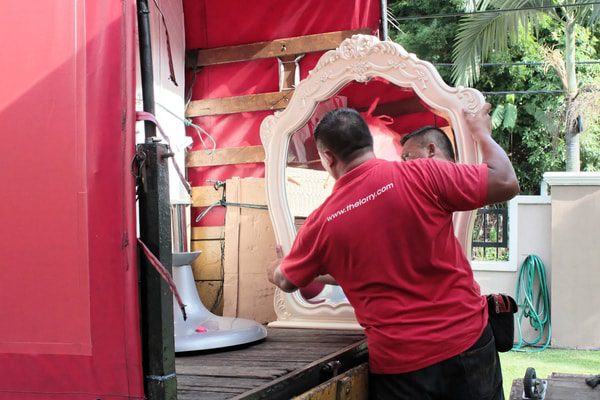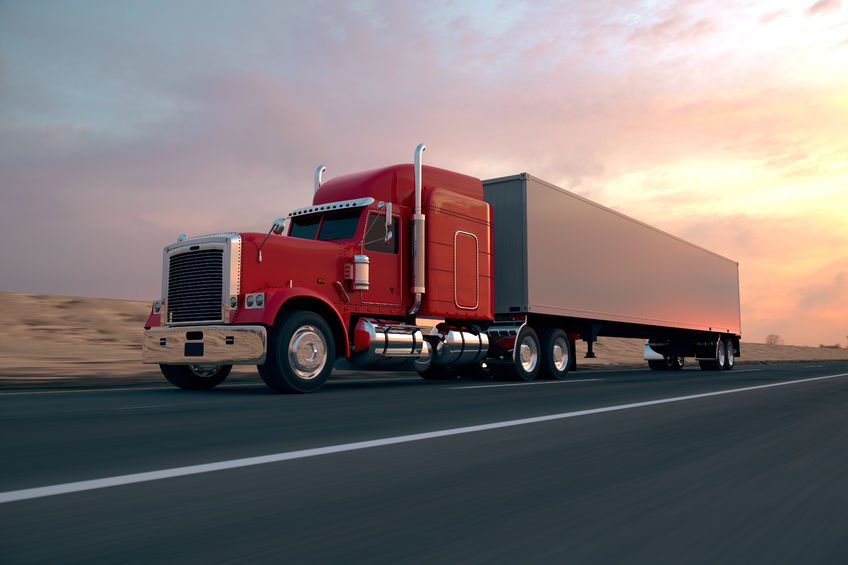
The lorry transportation business seems like a simple business on the surface? Yet, in reality, there are far more challenges and tribulations that come with it than most would notice.
Without sufficient knowledge, one can go off-course quickly and may fall on hard times.
This article is the first from a series of articles that will be published to help out ones that are interested in venturing into the transportation business.
Here’s hoping that this series of articles may also help current lorry operators in Singapore (be it veterans or newbies) to gain additional knowledge and help smoothen your daily workflow.
Part 1: The prospects in the lorry transportation business and the first step in making it.
1. The business prospects

The overall logistics industry in Singapore is massive. The World Bank had put Singapore on the No. 1 spot as Asia’s Logistics Hub in 2014.
This broad view of the country’s multi-billion-dollar industry is an indicator that the need for land transportation of goods is ever-present.
Moreover, the steady growth in the services sector (focusing on domestic wholesale trade) since 1990?s means that land transportation of retail goods continues to flourish.
This does not even include the also ever-present need for individual homeowners for movers to help them haul furniture and appliances across town when they move houses.
Homeowners are looking for better value for money for moving services, and manufacturers are looking for a higher level of professionalism means movers are becoming exponentially better at their jobs.
With how diversified the offerings and daily operations of lorry operators have become, the quality and availability of such logistics operators may come to be a fruitful profession.
Having said this, however, shortages of lorry operators still exists. But with a stronger infrastructure in operational management for this particular business, one can find working as a lorry operator a sizable income earner.
In short, the prospects are there. You can build a successful business around transporting goods and house moving. If you are interested, what’s next is to find the first lorry you need to get started.
2. How to obtain your first lorry
Right. The business prospects are taken care of, now you’ll be needing your first transport vehicle!
There are 3 ways of doing it:
- Buy a new one
- Buy used
- Leasing
BUY NEW
If you are looking to buy a new lorry, you may enjoy the benefits of having a brand new product. In which you may save expenses in regards to maintenance.
However, the cost to get a brand new lorry is undeniably high.
| Model | 10ft | 14ft |
|---|---|---|
| Isuzu | $83,000 | $92,000 |
| Hino | $86,000 | $94,000 |
| Fuso | $94,000 | $97,000 |
| Average | $87,667 | $94,333 |
Table 1.0: Costs to buy a new lorry.
| Model | 10ft | 14ft |
|---|---|---|
| Isuzu | $425 | $471 |
| Hino | $440 | $482 |
| Fuso | $482 | $497 |
| Average | $449 | $483.3 |
Table 2.0. Costs for monthly bank payment with proposed 20% down payment and 3% interest rate.
Based on the numbers above, we can surmise that if you would like to buy a brand new lorry:
- You will need around $16,600 to 19,400 to pay for down payment
- And around $425 to $497 for monthly payment
Yet you will save a lot on maintenance when you buy your first lorry brand new, as opposed to buying it used.
BUYING USED
If you think the cost for a brand new lorry is a bit too much of a capital to start your own lorry transportation business, you can opt for used lorries.
Where you can find used lorries you say? Check out websites such as;
Generally, prices for used lorries are about;
| Price | 10ft | 14ft |
|---|---|---|
| Minimum | $58,000 | $75,000 |
| Maximum | $70,000 | $85,000 |
| Average | $64,000 | $80,000 |
Table 3.0. Costs to buy used lorries under 10 years old
Obviously from the above table, you can see that the prices are considerably lower than buying brand new.
Though before you start considering buying used lorries, there are a few things you should take into account:
- If you are buying from an individual as opposed to from a used car dealership, they might only accept cash payment.
- If you are buying from a dealership, you may be able to pay the price in instalment. But, the yearly interest rate might be considerably higher (around 5% to 9%).
- As the norm when buying used vehicle, you should be very aware of the overall state of the lorry from its engine to its air-conditioning. Always ask for a test-drive before considering to buy.
LEASING
The third method of acquiring your first transport vehicle for your business is by leasing a lorry. This is a low-risk and low-cost method that can help you jump-start your transportation business.
The advantage of leasing a lorry (apart from the lower cost) is the lesser commitment (you may want to dip your toes into the business first, before jumping into it straight).
Going back to it being a low-cost option, however, this method is considered low-cost because you will only need to pay for your lorry on a monthly or yearly basis.
So you don’t have to cough up $16,000++ for a down payment at one go.
You can ask around people who own a couple of lorries and see whether they are willing to lease theirs.
Or if you prefer, you can look up Goldbell Leasing for options in lorry leasing.
The monthly rate for a lorry may generally be around:
| Lorries | 10ft | 14ft |
|---|---|---|
| Monthly rate | $800 – $1,200 | $1,200 – $1,500 |
Table 4.0. Costs to lease lorries every month
CONCLUSION
Of the three methods above, we at TheLorry would recommend the leasing option if you are just starting your journey into the transportation business.
The business is not easy. So it would be wise to have a friend/advisor to help you get started.
It would be even better if they are in the business as well, as they can help you get your first task as a lorry operator.
Once you know the business well, it may be time for you to invest in used or brand new lorries.
3. Employ a driver VS driving it yourself
Now that you have acquired a lorry, comes the question of whether you would be driving it yourself, or do you employ a driver to work for you? Both of these methods have their pros and cons. Let’s go into it:
| Pros | Cons | |
|---|---|---|
| Drive it yourself | Can better maintain the desired level of quality in the work. Customers often feel better if the? boss? is doing the work themselves rather than a ? worker?. Can learn the ups & downs of the business during its early phase first-hand. | Will not have much time to properly plan any marketing strategies and liaise with customers. Would not be able to answer calls from potential customers while performing your tasks. |
| Employ a driver | Give space for you to focus on doing marketing activities for your business, meet and liaise with your customers more effectively, and perform administrative tasks such as invoicing. Also can focus more on expanding your business. i.e. partnering with bigger companies. | The increased cost of operation. You will need a strict Standard Operating Procedure (SOP) to make sure your workers are keeping on par with the desired work quality. Need a high level of managerial skills. |
Do take note that this is on top of employing worker(s) to handle all the lifting and carrying during actual tasks.
As a person just starting his/her own lorry business, we at TheLorry would recommend? driving it yourself? the method first, and have maybe a partner, family, or friends to help out with liaising with potential customers.
When you have already known the transporting job and its challenges first hand (and acquire some revenue), then you would be more suitable to employ your driver.
4. The lorry transportation customer segments.
Now that you have a lorry and a driver to drive and perform transporting jobs (can be yourself too), now it is time to know what segment of customers you want to target, automatically drafting out your company strategy.
In general, we can segregate customers into two types:
- Individual customers (B2C)
- Corporate customers (B2B)
Both have strategies, work methods and needs of their own. Let’s go in-depth for each:
Individual Customers (B2C)

Generally, individual customers will need transportation services because they are relocating.
And they would need to hire a lorry that can move their furniture, appliances, and other items to the new house.
For B2C tasks, the service to lift, load and unload, packing, as well as disassemble the items will be needed. And on top of Singapore’s large apartment/condominium housing ratio, you and your helper need to be physically fit.
Besides being able-bodied to lift and handle heavy items, you will also need to have the right tools on standby. These tools include:
- Driller
- Screwdriver
- Lashing (to secure items on lorry)
- Used (but still sturdy) boxes
- Masking tape
- Marker pen
- Pen and pencil
- Shrink wrap (for furniture, not foodstuff)
- Bubble wrap
- Small trolley
There will be customers who opt to have partial moving services, where they have done most of the packing and wrapping.
and your job is to just pick things up, load them on your lorry, drive it to destination and unload them at the new house.
You may provide packing and disassembling services as added services with additional charges applied.
To have these additional services is essential for customers who would request a full move service.
This is where you are tasked to not only transport the items, but to pack, wrap, disassemble, deliver, unload, and arrange the furniture according to how the customer wants it at the new house.
As you might have imagined, this full moving solution will need you to employ more manpower.
And it also needs you to keep track of tiny details to reduce the chances of damage, misplacement, or loss of items.
But the pay for such a service can be sizeable (up to $2000 per job). The best part in operating your lorry services is that you will mostly have your income be in cash, which makes it easier for re-investment purposes.
Here are 10 tips for a smooth house moving job, to help you out;
- Leave early. Schedule your workers to come to work on time. Because if they are late, you?ll be late.
Bonus tip: Many of our lorry operators have employees living close to their house, so that when they?d be late, the boss can come and literally knock on their door (or pour water onto their sleepy heads.) - Check your GPS. With Google maps or Waze nowadays, your job gets way easier. Check the customers? addresses via these GPS apps so that you won?t get lost and be tardy.
- Contact the customer. Surprisingly not too common of a practice. Call your customer at least 1 hour before you reach their location. You may have to wait for a long time if they aren?t yet ready when you arrived.
- Be careful and detailed. Treat your customer?s items as if they were your own. Be careful when carrying and placing them so as to not leave any scratches and damages.
- Don?t waste time. Don?t stop for a smoking/chit-chat session during the move. The quicker you finish the job, the quicker you can get back home (or go on to your next job).
- Do more. Your customer will appreciate you more when you go the distance while doing your job. For example, if you see that some of furniture you need to move are a bit dusty, wipe them up. Simple things can get your far.
- Ask when you are not clear. If any of the arrangements with your customer is a bit unclear, never hesitate to ask them directly. This can smoothen the task considerably.
- Be transparent with your prices. Never charge your customers for something that you haven?t told them beforehand. These ?hidden charges? is the main reason customers won?t be using your services anytime soon.
Bonus tip: Prepare a message explaining your standard charges, extra services (packing, disassembling) you may provide, and added charges (shuttling, stair carry) you need to charge beforehand and have it featured on your website/advertisement or just Whatsapp them beforehand. - Smile. Really, don?t be a grumpy grouch when you?re doing the job. Be professional and friendly.
- Manage the load well. In general, you can ensure that there will be no damages to your customer?s things by arranging them the right way in the lorry.
Heavier items like beds, refrigerators, and wardrobes needs to be at the back. Then lighter items like coffee tables, floor lamps, can be put on top. Arrange sofas upright (if the height allows it) so as to not waste space. Smaller items such as boxes and bags should be put at the front. Reserve the sides of the lorry for metal items such as bedframes.
Corporate Customers (B2B)

Corporate customers usually include companies that want;
- Office moving
- Deliver goods to distributors, retailers, and ultimately, end users.
Office moving
Office moving is similar to house moving in the sense that it will need you to carry and deliver furniture and appliances. But the general scale of it is much larger.
The service that they will need will be of the? full moving? nature, which requires you to carry, load, unload, and arrange furniture and appliances at the new place.
You might also need to be very careful of moving smaller things like screws, bolts, nuts, and important documents along with the office furniture.
As the workload will be heavier, the payment will be as well. But you do need to know that usually, office moving jobs will be paid via credit card.
So be prepared to provide the means for customers to pay via credit card, and to wait for a while until the money comes in.
Delivering goods
The majority of corporate customers will be manufacturers looking to deliver their products to distributors and retailers.
Seeing as this type of delivery job will be on a contract basis, the monthly payout may be a bit lower than what you can get from B2C customers.
But it may prove to be a steadier income stream.
Plus, B2B jobs usually include delivering a set number of items (in standard-sized boxes) every time, so it wasn’t as complex and time-consuming as a house move, so you may be able to fit in 3 to 4 deliveries a day.
One thing you should remember, however. B2B jobs will need proper documentation such as Delivery Orders.
This document is a way for your client (manufacturer) to know that you have delivered the goods to their customers? hands (retailers) safely.
Be sure to have them stamped and signed and keep them. You’ll need to hand them over to your clients after the delivery.
What type of manufacturing companies are in need of deliveries?
Well, generally the ones you can target are;
- Dry food manufacturers
- Beverage manufacturers
- Clothing manufacturers
- Import and export companies
The table below nicely compares B2C and B2B jobs for your convenience.
| Individual Customers (B2C) | Corporate Customers (B2B) | |
|---|---|---|
| Level of complexity | High | High (Office moving) Low (Commercial goods) |
| How frequent? | Mostly on Saturdays Less on weekdays | Occasionally (Office moving) Very frequent (Commercial goods) |
| Type of lorry needed | 1, 3, or 5 tonne | 1, 3, 5 tonnes (Office moving) 20, 40 footers (Commercial goods) |
| Payment method | Cash | Credit (30-90 days) |
| Job scope | Carry, unload, pack, disassemble and assemble furniture and appliances | Carry, load/unload, pack, disassemble and assemble furniture and appliances (Office moving) Carry, pack, load/unload (Commercial goods) |
We at TheLorry recommend for your search for both individual and corporate customers. This way you can have a steadier daily task (B2B on weekdays, B2C on weekends).
This strategy will also help out in monetary terms, as you wait for payment for B2B jobs you did on weekdays, you can get some cash on hand on weekends through B2C jobs.
Look out for the second part of the series soon!


 SG
SG Malaysia
Malaysia Indonesia
Indonesia
Recent Comments